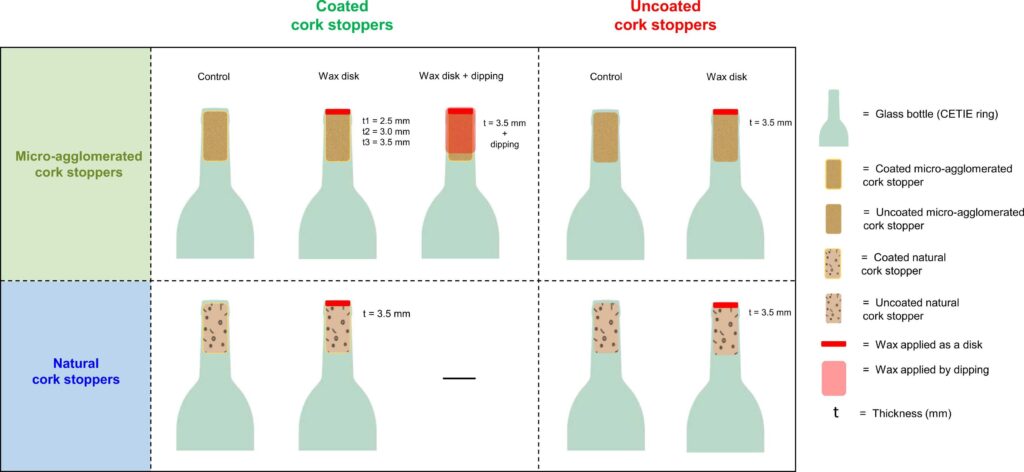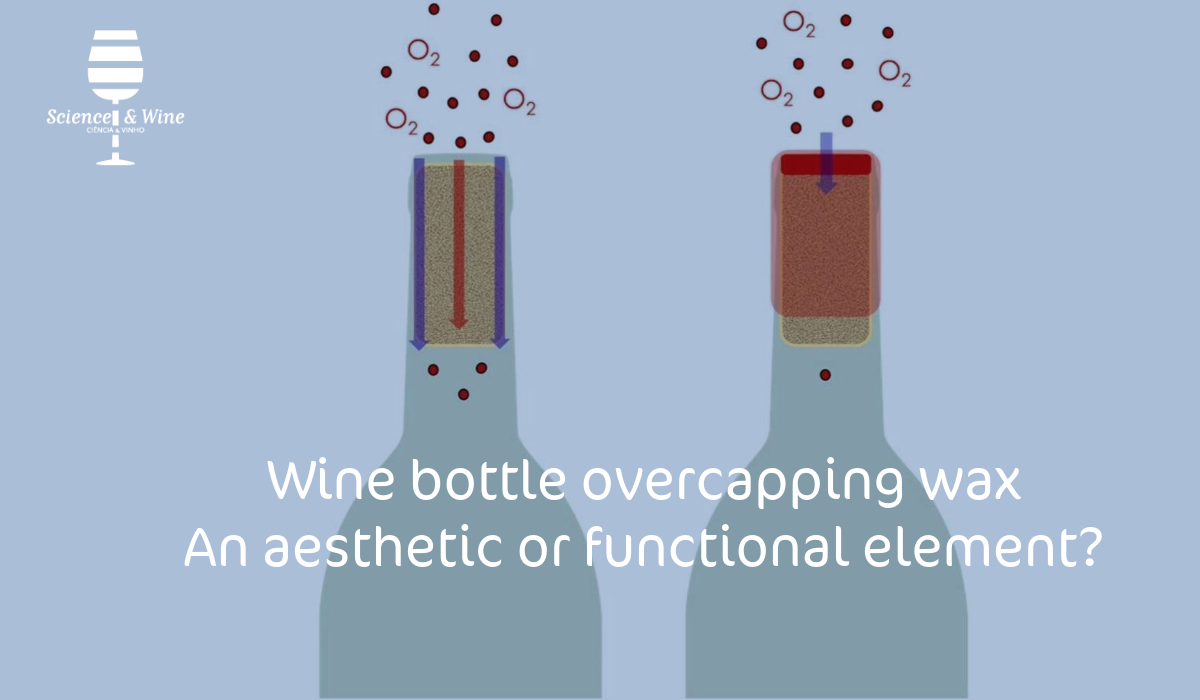Wine production, one of the oldest craft in human history, has long sought to balance the art of creation with the science of preservation. Traditionally, ancient cultures have developed methods to protect wine from spoilage, focusing on sealing containers to control exposure to oxygen, which is a crucial factor in wine degradation. For thousands of years, wax and other natural materials such as cork and resins have been used to protect wine. However, as science advances, the purpose of these materials, particularly wax, has become more ambiguous. A recent study by María Ureña and colleagues addressed this question by examining whether wax overcapping of modern wine bottles genuinely serves as a protective measure or simply fulfills an aesthetic function.
In this study, the authors revisit the purpose of wax by conducting a thorough investigation of its oxygen barrier properties. They explore how effectively wax can prevent oxygen from penetrating the bottle, potentially impacting the wine’s flavor, color, and overall quality. Oxygen ingress is a critical concern for winemakers because excess oxygen leads to unwanted chemical reactions that can spoil wine. Traditionally, cork stoppers have been seen as the first line of defense, but the question remains: does adding a wax seal on top of the cork significantly strengthen this barrier, or is it simply a nod to tradition?

Figure 1. Historical use of waxes/resins for sealing wine bottles as a method of preservation.
(Adapted from [1] Harutyunyan & Malfeito-Ferreira (2022) and Li et al. (2018), [2] Historisches Museum der Pfalz Speyer (2023), [3] Aldobrandino of Siena (13th century) -Courtesy of the British Library-, and [4] Robinson & Harding (2015).
To address this, researchers selected four types of waxes and resins: beeswax, shellac, microcrystalline wax, and a commercial wax blend, representing a range of commonly used sealing materials. This study tested these materials by measuring their oxygen transmission rates (OTR) under controlled conditions, simulating the storage of wine over time. By assessing oxygen permeability, the authors were able to classify the effectiveness of each wax type in preventing oxygen ingress. The commercial wax blend emerged as the most effective barrier, whereas beeswax exhibited the highest permeability. These results offer a baseline for comparing waxes not only against each other, but also in combination with different types of cork stoppers, particularly micro-agglomerated and natural corks.

Figure 2. Overview of the different conditions investigated in the present study.
The findings reveal a layered understanding of how wax interacts with different types of corks. For micro-agglomerated cork stoppers, which already provide a high level of oxygen protection, the addition of wax has little to no effect on reducing oxygen ingress. In these cases, the wax seemed to offer no functional benefit, suggesting that its primary role might be aesthetic, rather than practical. In contrast, for natural cork stoppers, which are known for their variability and occasional permeability, wax application slightly reduced the range of oxygen ingress. Although wax did not entirely eliminate oxygen exposure, it appeared to mitigate the effect of cork heterogeneity, especially in cases where defects might allow more oxygen to enter the bottle. This nuanced finding underscores that wax may play a modest role in supporting natural cork stoppers, but does not provide a guaranteed solution.
Interestingly, the study also tested wax on deliberately uncoated corks, mimicking defective stoppers that lack the usual protective surface treatment. In this scenario, the wax layer successfully masked defects by limiting the oxygen transfer through leaks at the glass/cork interface. This demonstrated that wax could act as an emergency barrier in extreme cases, preventing oxygen ingress, which would otherwise accelerate wine oxidation. However, such cases are atypical because commercial corks generally include protective coatings that mitigate this risk. Thus, although wax serves a backup role in preventing oxidation in defective stoppers, this situation is rare and does not reflect standard industry practices.
Overall, the results suggest that the function of wax in wine preservation may be less critical than previously believed, especially when high-quality cork stoppers with adequate surface treatment are used. In such cases, wax contributes more to wine’s branding and aesthetic appeal, offering consumers a visual cue that aligns with tradition. However, the study also highlights potential scenarios where wax could provide functional benefits, such as when used with stoppers prone to defects or under less controlled storage conditions. Wax may still offer limited protection, particularly in environments where cork performance is variable; however, it is not an essential component for modern wine preservation.
These findings open the door for future studies to further explore the interaction between wax and corks under real-world storage conditions. For instance, the impact of cork hydration and varying environmental factors on oxygen transfer over time could provide additional insight into whether the role of wax evolves with wine age. Moreover, understanding how the structural properties of cork and wax interact during prolonged storage could refine our knowledge of their effectiveness as oxygen barriers. While the current study primarily emphasizes the aesthetic role of wax, future research might uncover conditions where it plays a more active role in maintaining wine quality.
In conclusion, María Ureña and her team’s study underscores that while wax overcapping has roots in traditional wine preservation, its role in contemporary winemaking is more symbolic than functional, at least for standard-quality cork stoppers. However, in specific situations where defects may compromise cork integrity, wax still offers a subtle layer of protection against oxidation, potentially extending the lifespan of stored wines. For winemakers, the decision to use wax may hinge more on brand identity and consumer perception than on measurable preservation benefits, aligning with the ongoing balance between tradition and science in the art of winemaking. This nuanced understanding of the role of wax invites a deeper appreciation of both the history and future possibilities of wine-preservation techniques.
Read all at: Ureña, M., Chanut, J., Bottreau, V., Bellat, J. P., Gougeon, R. D., Lagorce, A., & Karbowiak, T. (2024). Wine bottle overcapping wax: An aesthetic or functional element?. Food Packaging and Shelf Life, 46, 101367. https://doi.org/10.1016/j.fpsl.2024.101367

